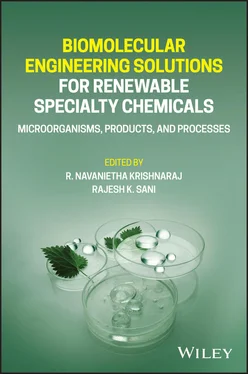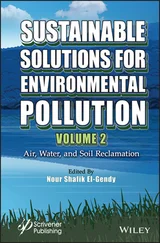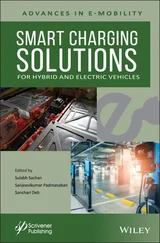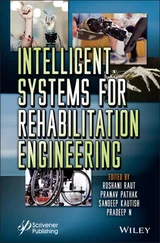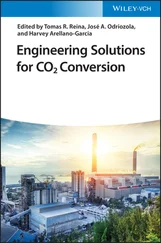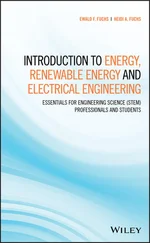Rouf Ahmad DarDepartment of Microbiology Punjab Agricultural University Ludhiana, PB India
Madhuri DuttaBiochemistry and Cell Biology Laboratory School of Basic Sciences Indian Institute of Technology Bhubaneswar, OR India
Santhalingam GayathriDepartment of Genetic Engineering School of Biotechnology Madurai Kamaraj University Madurai, TN India
Tanvi GovilDepartment of Chemical and Biological Engineering South Dakota Mines Rapid City, SD USA
Composite and Nanocomposite Advanced Manufacturing – Biomaterials Center
Rapid City, SD
USA
Muhammad Heikal IsmailDepartment of Chemical and Environmental Engineering Faculty of Engineering Universiti Putra Malaysia Serdang, Malaysia
Shereena JoyDepartment of Biotechnology Indian Institute of Technology Madras Chennai, TN India
Sukumaran KarthikaDepartment of Genetic Engineering School of Biotechnology Madurai Kamaraj University Madurai, TN India
Chandraraj KrishnanDepartment of Biotechnology Indian Institute of Technology Madras Chennai, TN India
R. Navanietha KrishnarajSouth Dakota School of Mines and Technology Department of Chemical and Biological Engineering Rapid City, SD USA
BuG ReMeDEE Consortium, South Dakota School of Mines and Technology
Rapid City, SD
USA
Composite and Nanocomposite Advanced Manufacturing Centre – Biomaterials (CNAM/Bio)
Rapid City, SD
USA
Manoj KumarDepartment of Genetic Engineering School of Biotechnology Madurai Kamaraj University Madurai, TN India
Sanjay KumarSchool of Biochemical Engineering IIT (BHU) Varanasi Varanasi, UP India
Satya Sundar MohantyAssistant Professor Department of Biotechnology School of Agriculture and Biosciences Karunya Institute of Technology and Sciences Coimbatore, TN India
Vignesh NatarajanDepartment of Biotechnology Indian Institute of Technology Madras Chennai, TN India
Sinjini PatraBiochemistry and Cell Biology Laboratory School of Basic Sciences Indian Institute of Technology Bhubaneswar, OR India
Urmila Gupta PhutelaDepartment of Microbiology Punjab Agricultural University Ludhiana, PB India
Department of Renewable Energy Engineering
Punjab Agricultural University
Ludhiana, PB
India
Akhil RautelaSchool of Biochemical Engineering IIT (BHU) Varanasi, Varanasi UP, India
Gayathri RavichandranDepartment of Biomedical Engineering Indian Institute of Technology, Hyderabad Kandi, Telangana USA
Aravind Kumar RenganDepartment of Biomedical Engineering Indian Institute of Technology, Hyderabad Kandi, Telangana India
Winny RoutrayDepartment of Food Process Engineering National Institute of Technology Rourkela, OR India
Anasuya RoychowdhurySchool of Basic Sciences Biochemistry and Cell Biology Laboratory Indian Institute of Technology Bhubaneswar, OR India
David R. SalemDepartment of Chemical and Biological Engineering South Dakota Mines Rapid City, SD USA
Composite and Nanocomposite Advanced Manufacturing – Biomaterials Center
Rapid City, SD
USA
Department of Materials and Metallurgical Engineering
South Dakota Mines Rapid City, SD
USA
Rajesh K. SaniSouth Dakota School of Mines and Technology Department of Chemical and Biological Engineering Rapid City, SD USA
South Dakota School of Mines and Technology
BuG ReMeDEE Consortium
Rapid City, SD
USA
Composite and Nanocomposite Advanced Manufacturing Centre – Biomaterials (CNAM/Bio)
Rapid City, SD
USA
South Dakota School of Mines and Technology
Department of Chemistry and Applied Biological Sciences
Rapid City, SD
USA
Shivam SaxenaBiochemistry and Cell Biology Laboratory School of Basic Sciences Indian Institute of Technology Bhubaneswar, OR India
Shailendra Singh SheraDepartment of Biotechnology Faculty of Engineering & Technology Rama University Kanpur, UP India
K. SundarDepartment of Biotechnology School of Bio and Chemical Engineering Kalasalingam Academy of Research and Education Krishnankoil, TN India
B. VanavilDepartment of Biotechnology School of Bio and Chemical Engineering Kalasalingam Academy of Research and Education Krishnankoil, TN India
Perumal VaralakshmiDepartment of Molecular Microbiology School of Biotechnology Madurai Kamaraj University Madurai, TN India
Mohan Kumar VermaSchool of Biotechnology Department of Molecular Microbiology Madurai Kamaraj University Madurai, TN India
1 Engineered Microorganisms for Production of Biocommodities
Akhil Rautela and Sanjay Kumar
School of Biochemical Engineering, IIT (BHU) Varanasi, Varanasi, UP, India
As we are going toward becoming more developed, we tend to see our transition toward more sustainable resources and knowing and understanding the life form more. This leads to the use of the living system and engineer them to produce biocommodities such as fuels, polymers, hormones, therapeutic proteins and peptides, and neurotransmitters, which is termed as biocommodity engineering. It basically deals with the need of society. Biotechnology, genetic engineering, and biocommodity engineering can be combined to meet these needs. The foundation of biocommodity engineering lies in molecular biology, which is also the foundation of genetic engineering or recombinant DNA technology (rDT). Therefore, it can be said that these terms are interrelated to each other. The majority of the biocommodities consumed by humans were earlier isolated from plants and animals, posing the threat of activation of immune reactions in humans. So, the machinery of the synthesis of these biocommodities can be engineered in microorganisms.
Its main aim is to engineer microorganisms to get a high yield of the product, use cheap raw material as a substrate so that cost of the product can be minimized, easy downstream processing, increasing robustness of the microorganism, etc. All this can be achieved by genetically modifying the organisms using genetic toolkits. This chapter deals with the basics of genetic engineering, giving details about the enzymes used, transformation techniques, and how to select a transformant from non‐transformants. Further sections compile the comprehensive data of the problems in the production of biopolymers, organic acids, and therapeutic proteins from conventional methods and development of mutant strains for the synthesis of these biocommodities. The last section of the chapter gives an insight about the biofuel production from photoautotrophic organisms such as cyanobacteria and microalgae, which utilizes sunlight and carbon dioxide as energy and carbon source, respectively.
1.2 Fundamentals of Genetic Engineering
The advent of genetic engineering, also called rDT, started in 1952 with the discovery of Hershey and Chase, stating DNA as the genetic material (Hershey and Chase, 1952). Cohen and Boyer in the early 1970s were the first to show that the genetic material of one organism can be easily expressed in the other. Genetic engineering ( Figure 1.1), in general, is the process in which the DNA is extracted, modified, transformed into a host cell, and a new organism is formed. The DNA from the desired organism is extracted and purified. It is then cleaved using restriction enzymes to get the gene of interest from it. The DNA fragment is then ligated into a vector, which acts as a driving vehicle for the DNA molecule to the host cells. This chimeric DNA molecule is then transformed into the host cells, and selection procedure under suitable stress conditions takes place. Finally, after numerous generations, the organism growing in the stress conditions is said to be recombinant or genetically modified. Genetic engineering has emerged as a crucial step in the development of industrial bioprocesses.
Читать дальше
